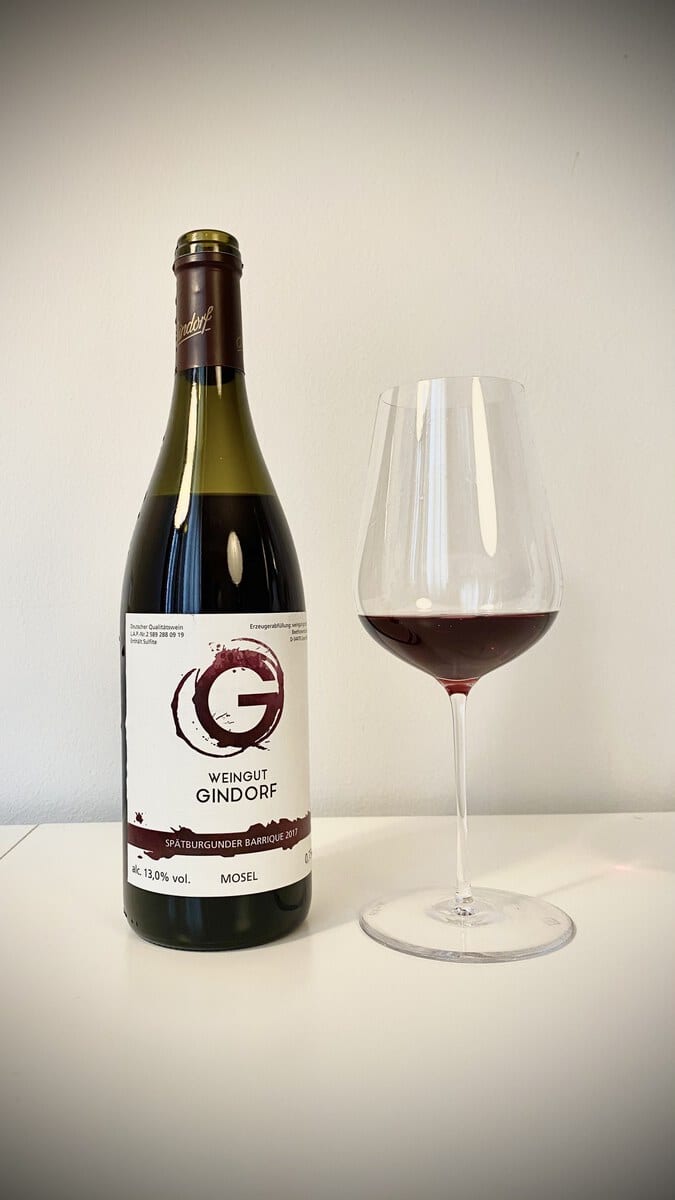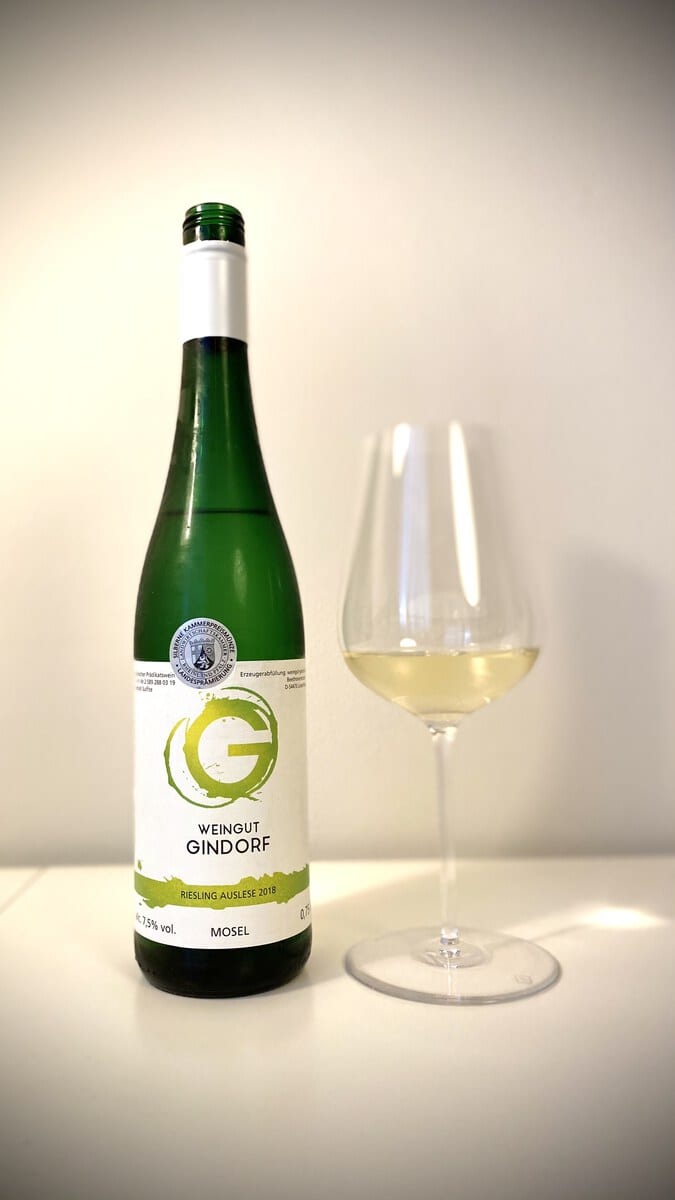Weingut Gindorf "Spatburgunder Barrique" 2017
100% Pinot noirDelicate with red berries and dry rose.
Tasting Notes
The Spatburgunder Barrique from Weingut Gindorf is ruby colour with a garnet rim.
On the nose it’s delicate and juicy with red berries, prunes, dry cramberry, dry rose petals, rose hips. There is a hint of clove and underwood.
The mouthfeel is light with a nice acidity a soft tannins.
On the palate it’s very delicate. The finish is medium long with notes of bitter chocolate and tobacco.

|
|
Weingut Gindorf |
|
|
Spatburgunder Barrique |
|
|
Red & Still |
|
|
Germany |
|
|
Mosel |
|
|
Pinot noir |
|
|
2017 |
|
|
Learn more
Mosel
Wine-producing region
The Mosel River is the name of one of 13 German wine regions (Weinbaugebiete) that produce high-quality wines. Although the wine region is Germany’s third largest in terms of production, some consider it to be the most prestigious internationally. The Calmont vineyard on the Mosel, has the steepest recorded vineyard in the world at 65 degrees incline. The Mosel is best known for its Riesling wines, but grows other grapes such as Elbling and Müller-Thurgau. Because of the Mosel’s northerly location, Riesling wines are always light, with lower alcohol content, crisp acidity, and “flowery” aromas. Its most typical vineyard soil is extracted primarily from different types of slate deposits, which give the wines a transparent, mineralic appearance and often great depth of flavor.
Link to here... | Derived from 'Mosel (wine region)' on WikipediaWines Related To Mosel
Weingut Gindorf "Riesling Auslese" 2018
Round and velvety. Rubber and under ripe mango.
Pinot noir
Red wine grape variety
Pinot noir is a type of red wine grape that belongs to the Vitis vinifera genus. It’s also probable that the name refers to wines produced mainly from Pinot noir grapes. The name comes from the words “pine” and “black” in French. The name pine refers to the grape variety’s tightly clustered, pine cone-shaped fruit bunches.
Link to here... | Derived from 'Pinot noir' on WikipediaBarrel size
The barrel size is rather important and matters for two reasons.
-
One; wine notes (also) depends on the chemical compounds in the wood - almost always oak. The “flavours” associated with oak fermenting are vanilla, coconut, cinnamon, clove among others.
-
Two; wine will oxidise in barrels. That is because some oxygen reaches the wine through the cask, via its cracks and joints.
Big vs Small barrel
In a bigger vessel the ratio of wood to wine will be smaller than in a smaller barrel.
The same applies to the ratio of oxygen to wine.
So, wine fermenting in a foudre will oxidise less than wine fermenting in a demi-barrique.
It will also be in contact with less wood and its compounds. Thus wine from a bigger cask will show less of those notes associated with oak fermentation.
Some common barrel sizes are:
- Demi-Barrique : 112L;
- Bordelaise : 225L;
- Bourguigone: 228L;
- American Oak Hogshead: 300L – (79 US Gallons)
- Puncheon 500L;
- Demi-Muid 600L;
- Foudre 2000-12000L;


